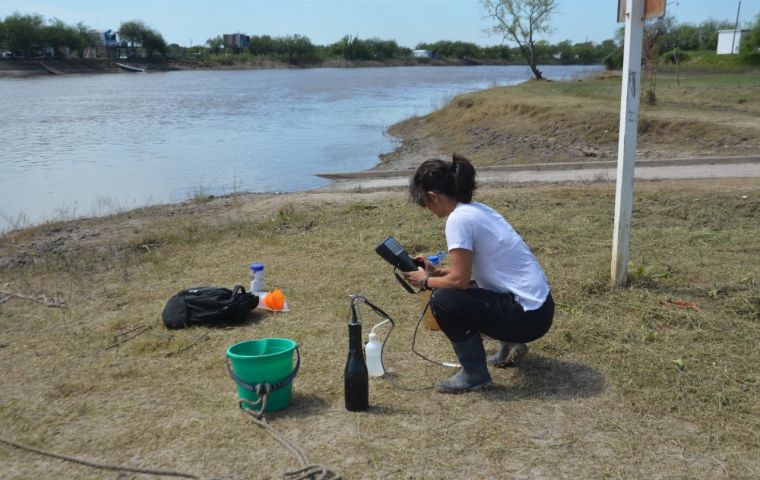MercoPress. South Atlantic News Agency
Pesticides and heavy metals detected in Argentine river waters
 The specialists found that “agricultural activity is the main source of contamination”
The specialists found that “agricultural activity is the main source of contamination” According to a report from the National Institute of Agropecuarian Technology (INTA) and the national universities of San Martín (Unsam) and of the Litoral (UNL), a high number of biocides was detected in the Salado River basin in the province of Santa Fe.
Scientists are concerned about the impact of these substances on the local aquatic fauna.
A laboratory study by INTA and the two universities confirmed the presence of 30 agrochemicals and heavy metals in the Salado river basin, in Santa Fe, also known as Salado del Norte, a considerable river course in the center-north of the country, belonging to the water complex of the La Plata Basin.
The report titled “Environmental quality and ecotoxicity of sediments from the lower basin of the Salado River on amphibian larvae” has been published by the international journal Science Direct.
The specialists found that “agricultural activity is the main source of contamination” due to the massive use of pesticides, since after their application in agricultural areas “they are transported to aquatic ecosystems” which they end up affecting and endangering.
Laboratory results showed the presence of residues of thirty substances including chlorpyrifos, which are banned in the United States and the European Union, in addition to diazinon, glyphosate and its metabolite aminomethylphosphonic acid (AMPA), acetochlor, and atrazine.
Among the pesticides detected were traces of carbofuran and imazapyr, the most dangerous to aquatic organisms as they are classified as Class I (Highly Toxic). The report points out that contaminants in sediments threaten aquatic life due to potential accumulation over long periods, and in many cases “are above the limits accepted by international standards”.
The document also pointed out that the wide variety of agrochemicals detected indicates their widespread presence in the water and sediments of this Basin where “the risk of chronic exposure of living organisms to biocide mixtures is inevitable.” As for heavy metals, chromium, copper, and iron from industrial activities were found in high and persistent quantities due to the lack of controls.
The study is the result of a multidisciplinary work carried out by a diverse team made up of Ana Paula Cuzziol Boccioni, Paola Peltzer, and Rafael Lajmanovich, from the Ecotoxicology laboratory of the School of Biochemistry and Biological Sciences of the National University of Litoral (UNL); Julieta Peluso and Carolina Aronzon from the Institute of Environmental Research and Engineering of the University of San Martín (Unsam); and INTA's Virginia Aparicio.
“To our knowledge, this is the first study to report the presence of such a high number of biocides in water and sediments of the lower Salado River,” the document states, and concludes that there is “an urgent need to increase the distance of pesticide-dependent transgenic crops from aquatic ecosystems, as the observed degraded environmental quality threatens socio-cultural services, human population, and the environment.”
(Source: Tiempo Argentino)




Top Comments
Disclaimer & comment rulesCommenting for this story is now closed.
If you have a Facebook account, become a fan and comment on our Facebook Page!